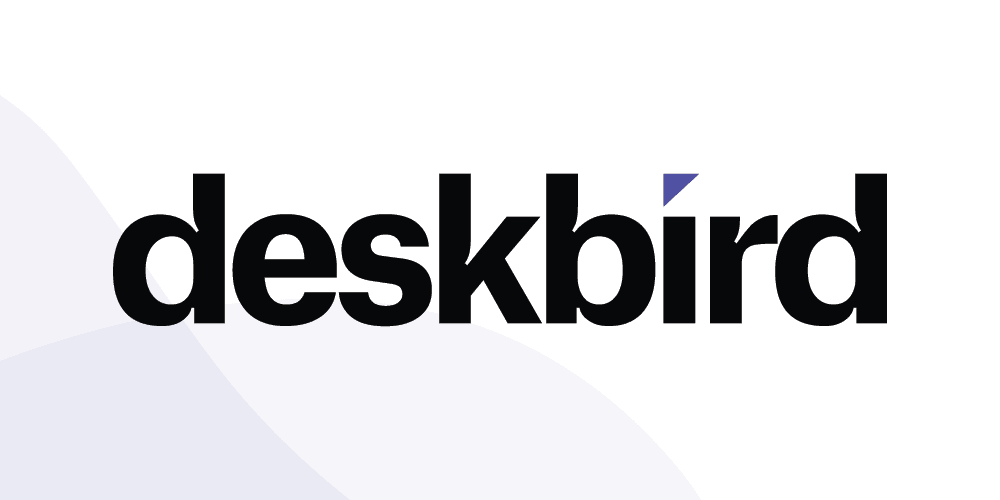Hot Desking Advantages and Disadvantages. Hot or cool?

Imagine if you came to the office in the morning and didn’t know where you’d be working that day. You could sit with a group of people on Monday, work at a private desk on Wednesday, or make a workstation for yourself suspiciously close to the snack bar on a Friday.
Sounds cool? Let’s dive into the hot topic of “hot desking” and discover its advantages and disadvantages.
What’s hot desking?
Hot desking means workplaces are not permanently assigned to specific team members. Instead, they’re occupied by multiple employees at different times or days without prior reservation. It is a form of desk hoteling. We will go further into detail about the connection between the two later in the article.
Hot desking is by no means a new idea. Companies already used it in the 90s. Since then, the popularity of hot desking in offices has risen dramatically. What’s good about the long history of this practice is that we have sufficient data and extensive analysis to understand the pros and cons of this workplace system.
Benefits of Hot Desking
The core value and great benefit of hot desking is flexibility. For employees, it reduces the stress of planning when and where to work in the office. On those days when team members look for inspiration, they aren’t discouraged by the idea of coming to the office. They know they can get themselves sorted right there on the spot.
For employers, hot desking is a great way to scale their offices up or down when needed. It becomes easier to adapt to better or worse economic times or shifts in company strategy, still keeping the productivity of their teams.
With the office space flexibility, comes the need for easy-to-maintain premises. Let’s face it: an office full of dusty folders smelling of the 90s is not a good picture and neither is it safe. Visual decluttering and cleanliness is another excellent benefit of hot desking. It can make employees more productive and help them concentrate on their work. They can also appreciate more the office interior design that companies have put so much thought into.
Moreover, desks with no clutter are so easy to clean and disinfect. In the post-pandemic times, this is highly appreciated by everyone and even required by country policies. Here, the COVID-19 pandemic and hot desking have more and more connections.
Cutting Costs for Companies That Went Hybrid
Lessons learned from COVID-19 made the future of work hybrid. Nine out of ten companies will implement some kind of hybrid work environment in the post-pandemic world. American Express, Ford Motors, LinkedIn, Mastercard, Salesforce, Uber, Yelp. This is just a short list of companies embracing hybrid work mode in 2022.
With a hybrid work model, employees work from anywhere and at any time of day, which means they’re not in the office all the time. When they are in the office, though, they require more options for working. Traditional offices are becoming more like coworking spaces so that employees can collaborate.
This office design change is closely tied to companies’ desire to save money. According to this survey by Génie des Lieux, 42 percent of firms consider real estate flexibility a priority in 2022 to cut office space rental costs. Real estate space is expensive, and many organizations are killing two birds with one stone by removing “unused” office space.
So, hot desking in the office might seem necessary for many organizations — a way to cut costs and optimize the space. In 2019, Cushman and Wakefield, a real estate firm, found that nearly two-thirds of companies use coworking to some extent, and many expect to double their commitment over the next five years. Overall flexibility and real estate cost savings are stated as top reasons.
However, as we can see, this trend is not solely driven by cost but also by the changing demands of employees. Many people value the opportunity to work in different environments and to choose their work location. Some would prefer to be at the office but still want to be able to accommodate a spontaneous change of plans to work from home or somewhere else. Being flexible gives employees the ability to work around their lives.
Hot Desking vs. Hoteling
Both hot desking and desk hoteling are methods of flexible seating. However, hot desking is a “first come, first serve” approach, and desk hoteling works with workplace reservations. Both ways help companies cut costs and optimize office space more effectively.
While hot desking can be described as a coworking style, desk hoteling always entails a change in office design. For instance, hot desking requires employees to use their personal laptops more, while desk hoteling allows the use of company equipment.
Hoteling gives team members more stability, as they can reserve a desk for the whole week when they need to work on a project together. They can set plans with their teammate by the same table and work knowing they have each other in their corner. This fosters trust in teams.
However, hoteling is a little bit less flexible. If all tables are reserved, there’s a danger of not finding space for an emergency meeting or when each team member needs their own space. Computers and equipment need to be installed and maintained regularly by IT specialists as many people use them day by day.
Some companies combine the two methods to have the best of both worlds. Their office might have sections with personal desks and group tables, temporarily assigned workstations, permanently assigned desks, conference rooms, etc. Developing such an office space requires proper planning, careful financial estimations, and attention to detail.
Disadvantages of Hot Desking
Hot desking fosters a work-life balance by encouraging employees to come and go as they wish, based on their schedules. However, no concept comes without its disadvantages.
The benefit of a minimalist, easy-to-clean office begs the question: where does stuff go? Employees still have folders, printed materials, and equipment they need for work. But they can’t put it on their own desk. So companies have to think about lockers, bookshelves, or mini filing cabinets to solve the “storage problem” when implementing hot desking in the office.
Security must be a priority when employees are free to work where they like. A company might not have a solid foundation for hot desking if team members’ laptops and cloud services aren’t secure. Therefore, hot desking isn’t recommended for some companies or employees that work with sensitive data. For most, though, it’s a way to bring innovation and balance, as experts from this security marketplace roundtable shared.
Physical and mental health are other serious matters that companies just have to address. The hot desking method has been accused of creating physical and mental stress at work:
- some find searching for a free desk to be a stressful morning practice;
- some worry about possible musculoskeletal disorders, like back, shoulder, or wrist pain, when working at unadjusted desks.
These are solid issues, and they can and should be addressed by companies that decide to practice hot desking. This year, we at Hubtobee published an extensive and fascinating interview with Alexandre Long of Agilea about the health challenges of hot desking and how they can be solved.
Unfortunately, because of these disadvantages, hot desking gets “canceled” sometimes. Yet we take the downsides as challenges because we know that not every workplace strategy fits every company. For some, hot desking is a lifesaver, while others see its disadvantages as strong reasons to opt for another policy and be done with it.
What to Do with These Hot Desking Advantages and Disadvantages?
Behind every report saying, “we’re successfully practicing hot desking in the office and see increased productivity from it,” lies an intensive effort of strategizing and innovations. In other words, companies have invested a lot of time and resources to figure out how to make hot desking work best for their company culture.
Think about these aspects of corporate culture when deciding whether to implement hot desking:
- How dynamic is your team? How are colleagues collaborating and exchanging ideas?
- How individualistic and autonomous are your employees?
- How introverted or extroverted are they? Consider stress for introverts to be forced into a buzzing coworking space;
- Is it already practiced that new hires can easily chat with the CEO? Or maybe your team evolved to separate colleagues of different positions in their respective spaces?
Self-perception, holistic approach to workplace design, and flexible and thoughtful strategy will bring your company closer to the benefits of hot desking. With it, you are bringing innovation to your company as communication and HR solutions (that include hot desk management) are known for being at the forefront of technology nowadays. For potential hires and employees alike, this is a factor that influences their loyalty and support toward the employer.

Halyna OSADCHA
Guest Writer, a Hybrid Work Devotee.




